沖繩自駕遊,是非常彈性自由的旅遊方式,開車自駕可以輕鬆前往全島各個景點,同時也是在日本租車自駕的新手村!這篇文章將會詳細說明要準備的駕照文件、保險須知和沖繩交通規則,讓即將前往沖繩租車自駕的你,看完馬上就能理解成為沖繩自駕老司機!
到沖繩自駕前,最常見問題:
Q:要準備什麼國際駕照才可以到日本自駕?
A:必須準備好 台灣駕照、日文駕照譯本、護照、預約時使用的信用卡即可順利在沖繩租車!
Q:到沖繩自駕應該要注意什麼?
A:不一定要拿駕照滿一年才能租車,但租車前請確認該店家的承租最低年齡限制。同時,因為右駕習慣不熟悉,即使在沖繩,開車仍須減速慢行,以免發生意外!
Q:在沖繩自駕安全嗎?
A:線上租沖繩車輛價格通常包含 車輛租金、基本保險(有自負額),油錢、高速公路過路費、選購配備則依照不同店家規範不同;選擇加保 NOC、CDW補償險,可以大幅減少事故發生後續的支出負擔。
Q:沖繩自駕通常要多少錢?
A:目前透過 gogoout 預訂沖繩租車,最划算NT$890起,依照不同車款定價不同,部分店家也提供額外免費取還車服務、兒童座椅提供等!
👇👇沖繩租車一天 NTD 890 per day👇👇
Essential Documents and Application Process for Car Hire in Okinawa
到沖繩自駕前,記得攜帶護照、本國駕照、日文駕照譯本 or 國際駕照,以上資訊缺一不可才可以順利租車!
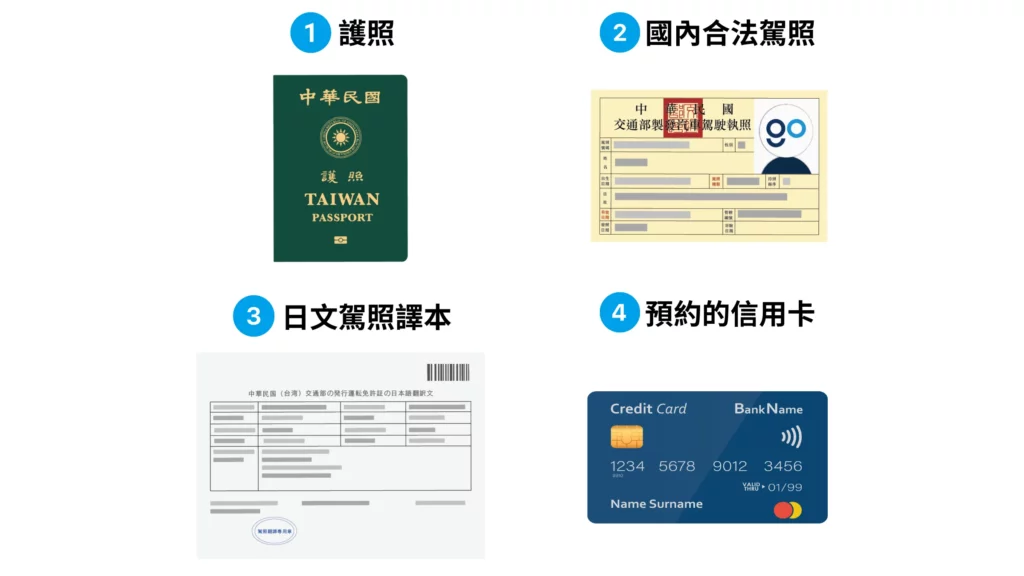
| 證件-護照 | 在沖繩遊玩、租車自駕、退稅必備證件,要確保出國前要有高於六個月的護照有效期限 |
| 證件-本國駕照 | 租車自駕除了日文駕照譯本外,還要有駕照正本,同時出示才能在日本自駕上路 (確保你的駕照在沖繩旅遊期間仍在有效期限內) |
| 證件-日文駕照譯本 | 日本只辨認日文駕照譯本,若沒有攜帶就沒有辦法正常租車! (日文譯本與駕照資訊相符,若駕照需換發或更新,請務必確認資料一致) |
| 信用卡 | 部分租車公司可能在網路預約時已經扣款,或是現場取車時付款,建議攜帶同張信用卡 |
| 文件-租車預約資料 | 在線上完成租車預約後,請列印或保存預約確認或是序號 (記得加租車公司的聯繫方式,避免到沖繩後有意外無法及時聯繫) |
How to Obtain Japanese License Translation
JAF (Japan Automobile Federation)
You can apply for a translation online or by mail.
- credit card is required
- 汽車/機車駕照正本
- 譯本申辦規費$100
- 駕照若為舊版or已過有效期限者,請攜帶1吋相片1張、規費200元,進行補、換發新駕照再申請駕照譯本
Certified Translation Services:
- On監理服務網需要先註冊會員資料 → 選擇駕駛人>駕照>申辦日文譯本 →確認相關資料並申辦
需等待7-12個工作天(含郵寄) - 信用卡或金融帳戶繳納總費用:辦理規費100元+郵寄費用28元
沖繩自駕必看注意事項
到沖繩自駕是近年非常熱門的沖繩自由行方式,但到日本自駕最大的難題是駕駛習慣、交通規則跟台灣有蠻大的不同!甚至頻傳台灣人到沖繩租車自駕出車禍,因此即將到沖繩開車的你,一定要詳讀以下交通規範,確保自己的旅程平安,也不造成其他沖繩用路人的困擾~

沖繩交通規則
沖繩是右駕方向行駛
Japan drives on the left side of the road,方向盤操作和的道路規則,都與台灣相反。因此,當你的方向燈被誤打成雨刷時,別驚慌。重要的是,緩慢行駛、注意路況,並確保遵守當地的交通規則,不要忽略任何重要的安全細節。
右轉注意
沖繩自駕口訣:「左轉轉小彎、右轉轉大彎;雨刷在左、方向燈在右」
在沖繩右轉時,請記得右轉到「左側道路」,相反左轉時就直接轉就會維持在左側道路了!
此外,在接近交叉口或出口時,優先確認右方的車輛再觀察左方,以防止與迎來的車輛發生碰撞
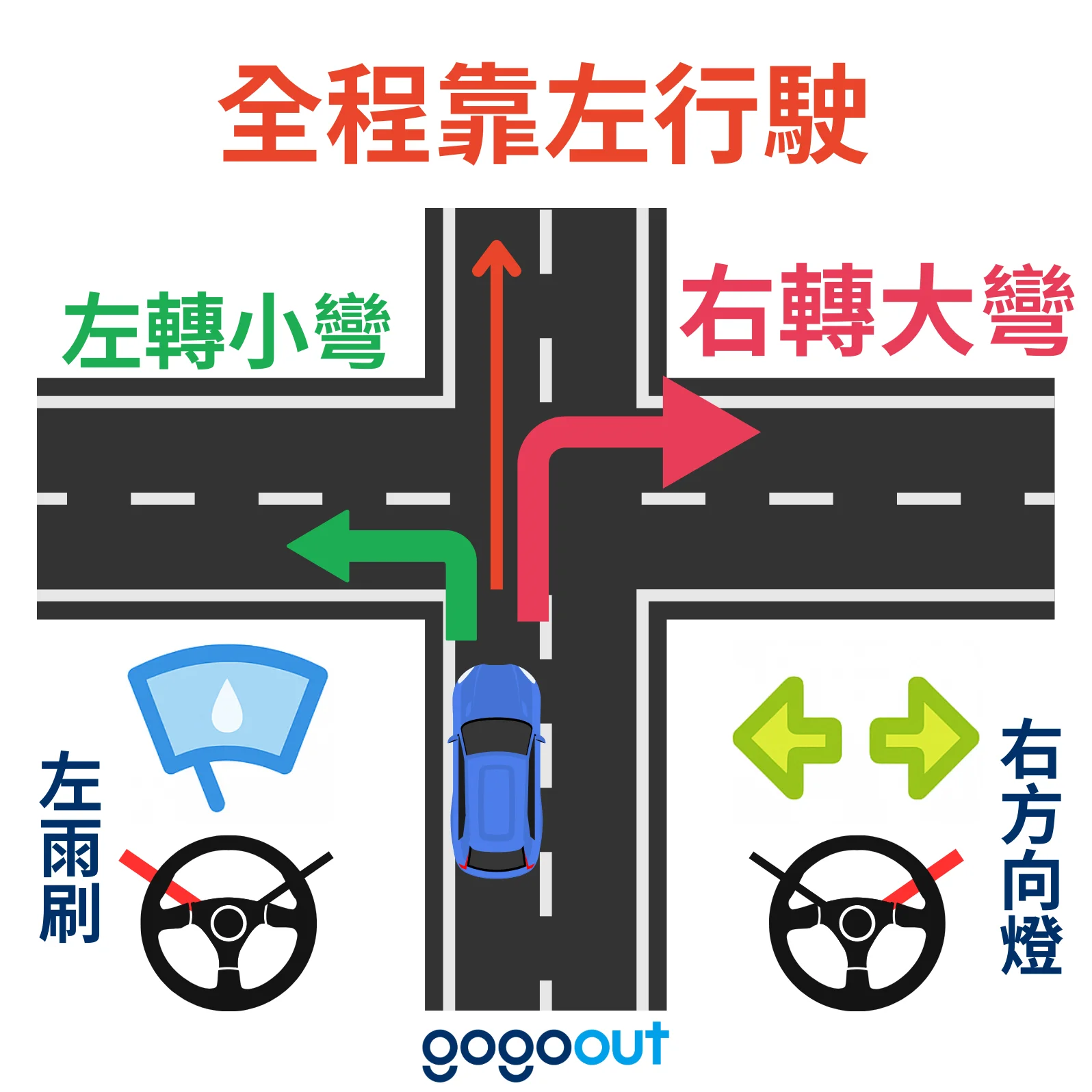
👇👇👇R榮到沖繩自駕也選gogoout👇👇👇
點此前往預訂沖繩自駕的車輛吧!
Safe Driving
All passengers must wear seatbelts, and drunk driving is strictly prohibited., Drive steadily,, don't speed,and absolutelynever drink and drive..
These are basic traffic safety principles regardless of the country. Whether you're in the U.S. or Japan, you should strictly adhere to these rules!
超速罰款
The maximum speed limit in Okinawa is 50 mph (80 km/h). You'll definitely get a ticket if you exceed 62 mph (100 km/h), so please be extra careful.
Regular roads / highways speeding within 15 km/h, fine ¥9,000
Highway speeding 30 km/h or more but less than 35 km/h, fine ¥25,000
Highway speeding 35 km/h or more but less than 40 km/h, fine ¥35,000
Highway speeding 40 km/h or more, fine ¥100,000
(These fines are for ordinary small vehicles, different vehicle types have different fines)
沖繩測速照相
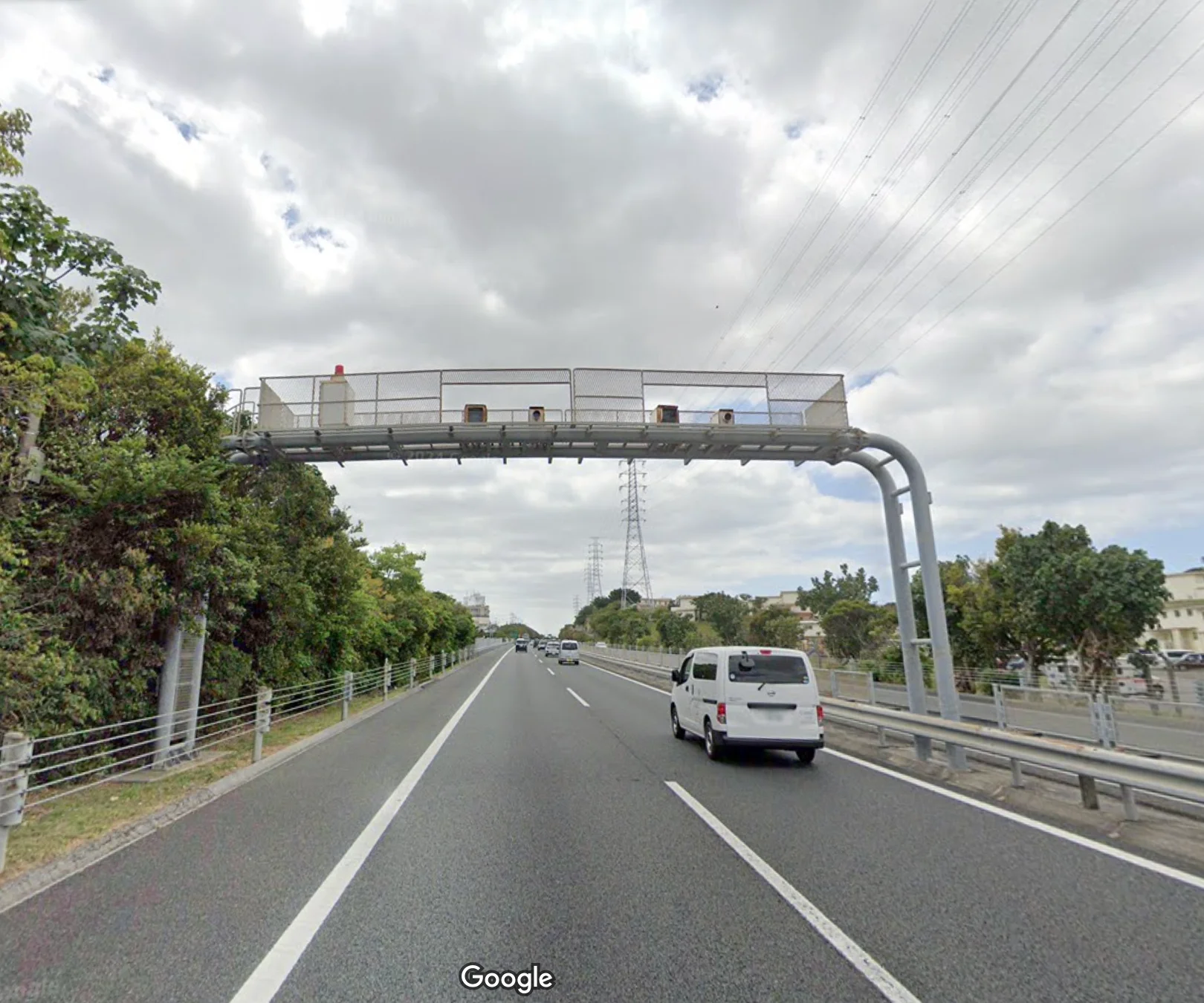
沖繩高速公路是有測速照相的!詳細位置可以在 Orbis Guide 看到。
依照目前該網站資訊說明,沖繩有1支固定式測速在高速公路上,剩餘還有5支移動式分佈在各個地區中~

日本駕駛在速限上多半是自由心證,通常在高速公路上,其他車輛都是最高速限的+10~+20 的車速在行駛,當你發現每台車都開得比你快時,請你不用太擔心~
不倡導超速行駛,但你可以選擇跟上車流,跟著當地人車速行駛,不造成車輛回堵、阻塞,或是按照速限行駛,但請行駛在「左側外車道」,避免長期卡在「右側的內車道」!
酒駕罰款
Blood alcohol content (below 0.15 mg/l), fine¥500,000 or more / passengers also fined ¥300,000 or more
Driving while intoxicated to the point of being unable to drive normally, fine ¥1,000,000 or more / passengers also fined ¥500,000 or more
(While not wearing a seatbelt doesn't result in a fine, it may lead to partial insurance non-payment in case of an accident.)
開車滑手機
It's strictly forbidden to use your phone while driving, whether for calls or browsing. Violating this rule will result in a fine of about $40 (¥6,000)
Yellow Lane Markings
在沖繩自駕時,能不能從右轉進對向店家路口呢? 答案是看情況!
對於黃色車道線,規定是不能橫越線進行超車,除非有明確的指示允許。
但是,在無禁止標誌的情況下進行左轉、右轉或迴轉時,請先禮讓對向來車先行,確認無來車後即可通行哦~
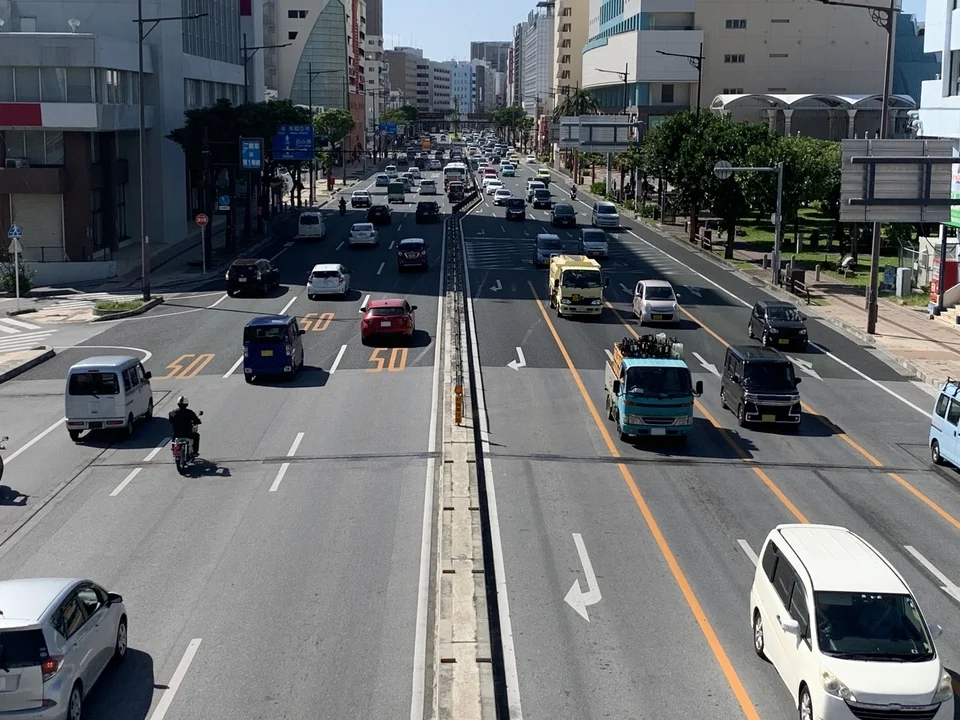
White Lane Markings
Solid white lines: You cannot freely change lanes, but it's okay to briefly cross them to avoid parked vehicles on the roadside. Return to your lane promptly.
Dashed white lines: You can change lanes or overtake when safe.
Solid yellow line next to dashed white line: Vehicles on the white line side can change lanes to the yellow line side, but vehicles on the yellow line side are prohibited from changing lanes.

停車再開
The stop and restart sign system in Okinawa differs from the U.S. When you see the "止まれ" (STOP) and "踏切" (Railroad Crossing) signs, you must come to a complete stop and restart only when it's safe. Failure to comply results in these penalties:
Failing to stop at a "止まれ" sign: $47 (¥7,000) fine
Failing to stop at a railroad crossing: $60 (¥9,000) fine

Temporary Parking:
在日本,對於隨意臨停或亂停車是有非常嚴格的執行和懲罰的,沖繩也是一樣!
沖繩對這些行為的處罰相當嚴厲,舉例來說石垣島是非常強制執行的,不管是違規停在私人土地,或者是佔用他人的車位,基本都是3萬日元起跳,即使對方強行將你的車上鎖,你也仍是理虧的哦!
如果必須在車道側停車,請特別留意人行道路緣的標示:
黃色虛線:可以臨時停車,但不可以原地停車熄火,必須保持車輛處於移動狀態。
黃色實線:完全禁止臨停或熄火停車,在這樣的地方停車將會被認定為嚴重違規。
違規停車可能會導致罰款,並且罰款的金額為 ¥10,000 起跳。
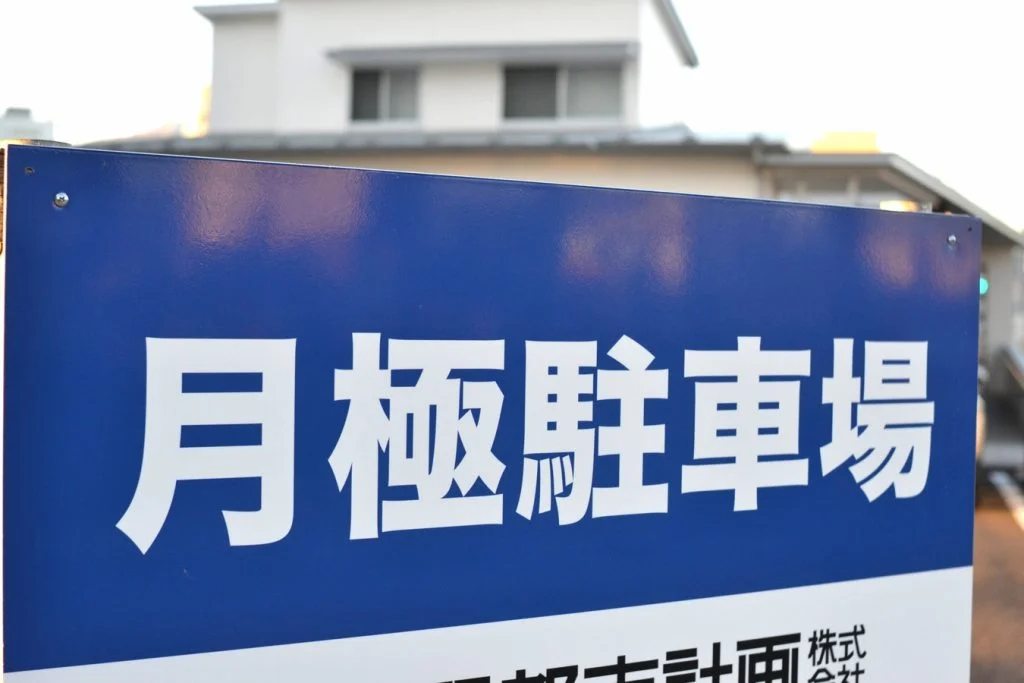
Note: Before entering a parking lot, double-check it's not a "月極駐車場" (monthly parking lot). These are for monthly renters, not hourly parking, and you might accidentally park in a resident's spot!
沖繩停車場
沖繩好停車嗎?答案是很容易的,因為到處都有停車場可以使用,但是收費並不是統一定價哦!
日本停車場計費方式百百種,以下分別列出常見的收費方式,記得在入場前看清楚以免大傷荷包:
- 星期區間:平日、土日祝(六日)的平假日之分;還是 月~土(一~六)、日曜的分別
- 時間區間:白天 8:00~20:00 / xxx円 、 夜間 20:00~8:00 / xxx円
- 最大收費:晝間最大xxx円、夜間最大xxx円;入庫から/駐車後12時間最大(幾小時內最高收費)
以上的規則收費都不同,若是只看到最大收費,可能會因為忽略了旁邊的規定小字而付了一大筆停車費!
延伸閱讀日本停車場收費告示: Times停車場告示牌 / 名鉄協商駐車場告示牌
停車場查詢App推薦
在google map好不容易查到了停車場位置,到了才發現收費高的嚇人嗎?推薦你這款超好用日本停車場查詢App-「駐車場檢索 – PPPark」
IOS下載點此 | Android下載點此 -> 下載前需要先把下載地區轉換至日本才可以下載!
(手機跨區操作方式請依照不同手機裝置,進行搜尋確認)
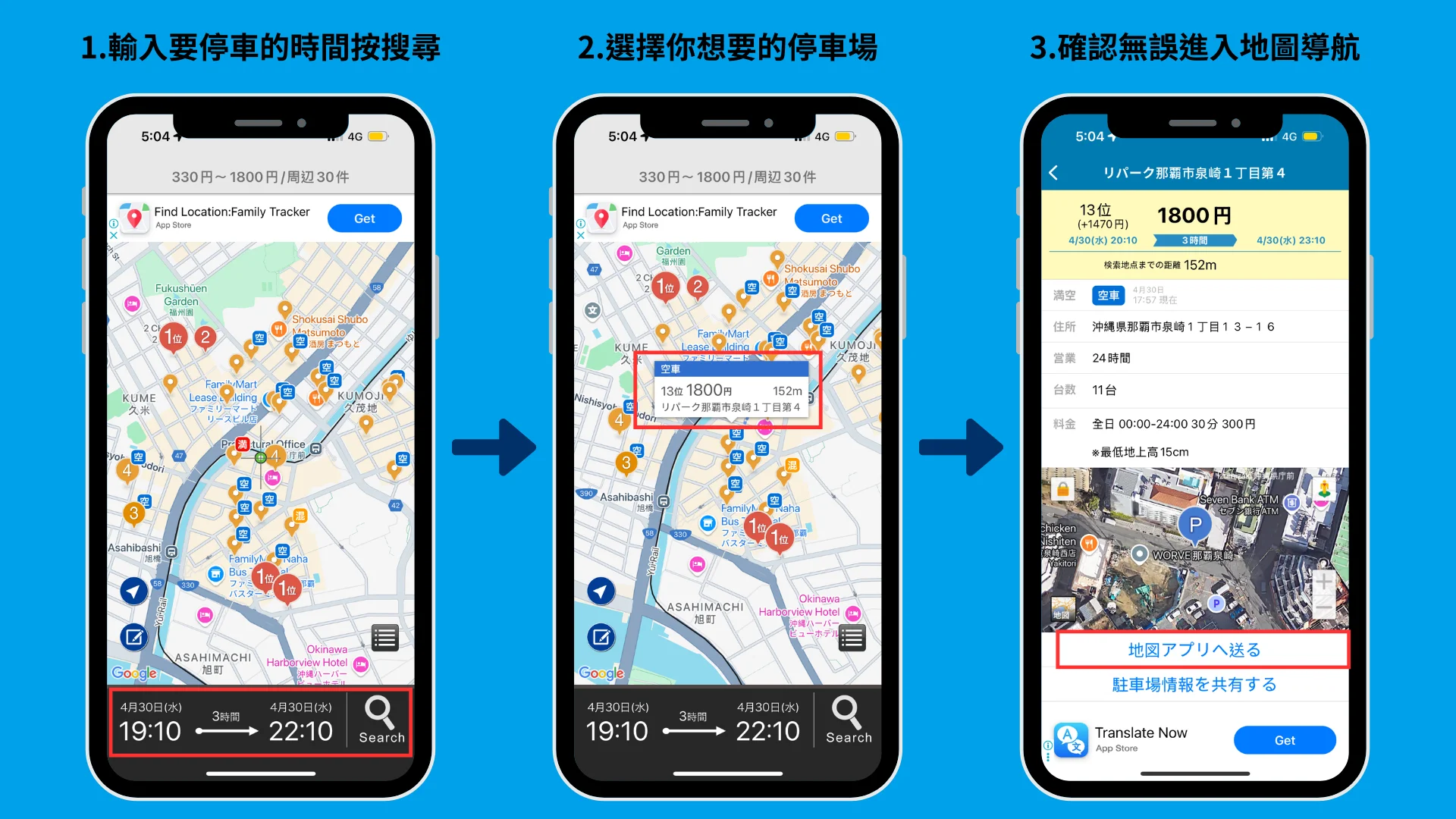
覺得下載App跨區太麻煩?不要緊,他們也出了網頁版本:駐車場検索 PPPark!
路權分明
Japan's traffic rules ensure clear right-of-way. The typical order is:
Straight-going vehicles: Absolute priority
Left-turning vehicles: After straight-going vehicles but before right-turning ones
Right-turning vehicles: Last to pass through intersections
This clear allocation helps maintain orderly traffic flow and ensures safety.

主幹道分權
On main roads, vehicles already on the road have the right-of-way.
Continue driving and don't suddenly brake when side road vehicles are merging.
Those on side roads should slow down or stop completely before merging when traffic allows.
提醒|如果過程若發生問題都能使用gogoout線上中文客服隨時替你解決訂單問題!
行人優先
In Japan, respecting pedestrians is crucial. Always yield to pedestrians to avoid fines and ensure a positive driving experience.

Reminder | If you unfortunately receive a traffic ticket, remember to go to the local police station (koban 交番所) to pay the fine. If you wait to pay at the rental car company, the amount will increase!
Okinawa's Special Traffic Signals and How to Read Traffic Lights
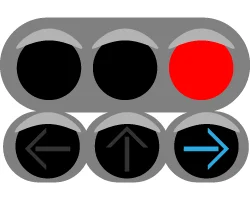
Traffic lights:
In Japan, traffic lights play a crucial role. The upper row usually shows standard red, yellow, and green lights, while the lower row indicates straight, left turn, and right turn signals. For example:
Red light + straight arrow: Continue straight, but no turning
Red light + left turn arrow: Left turn allowed, but no going straight or right
Green light + right turn arrow: Safe to proceed in all directions, including right turns
這些紅綠燈的指示非常重要,並幫助確保道路上的交通有序且安全。請務必遵守這些燈號,以確保你和其他道路使用者的安全。
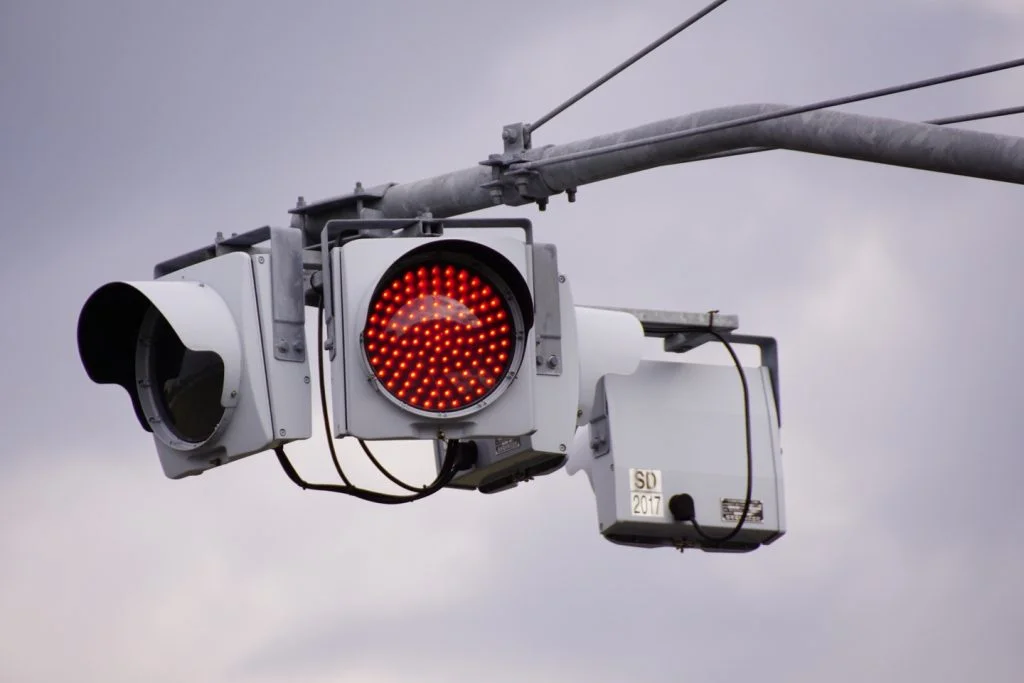
Flashing Yellow/Red Lights:
在日本的紅綠燈系統中,當遇到路口的「閃爍黃紅燈」時,這表示你需要特別注意,因為這種燈號的含義與普通的紅綠燈略有不同。
Flashing yellow:: Slow down, proceed with caution after checking for other vehicles
Flashing red: Same as a stop sign; come to a complete stop, proceed when safe
Traffic Signs:
Pay attention to traffic signs while driving in Okinawa to avoid violations.
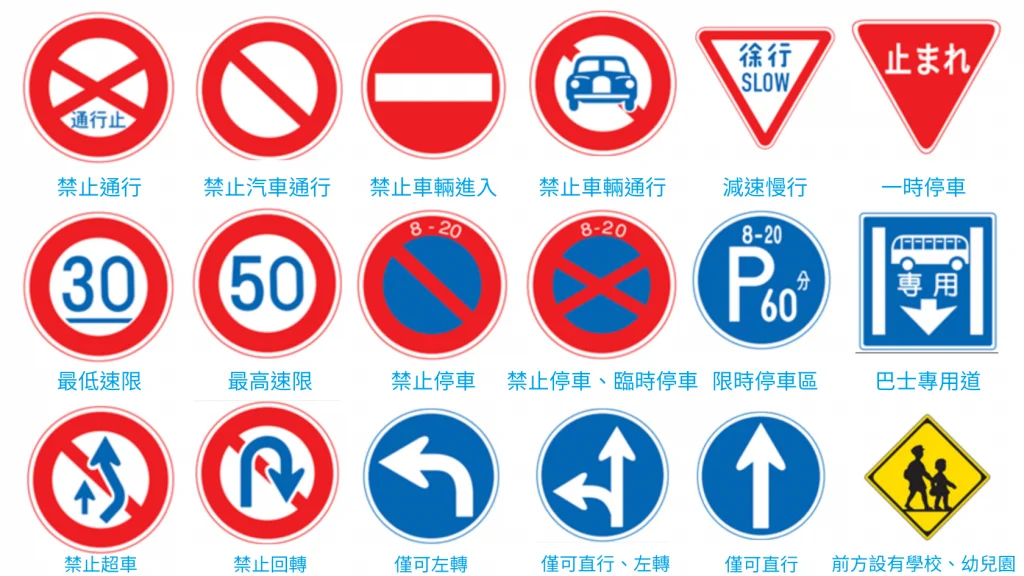
How to Pay Traffic Fines in Okinawa:
真的不幸吃下了交通罰單,請記得按照以下步驟進行繳納!
💡Step1:Take the ticket to a local police station (koban) to get a payment slip. Don't ask the rental company to pay on your behalf as they'll charge extra fees.
💡Step2:Pay at a nearby bank or post office.
💡Step3:Keep the payment receipt and show it to the rental company when returning the car.
Note: Always pay fines yourself. Failure to pay can result in increased fines and being blacklisted by Japanese car rental companies.
How to Refuel in Okinawa:
Confirm the correct fuel type for your rental car.
沖繩加油站同樣有 人工/自助 兩種加油島可使用。如果不會說日文的朋友,到人工加油後,直接拿手機指著你要加的油種給服務人員看就對了!
人工通常直接對著員工說「請幫我加滿一般汽油」,接著拿出現金或是信用卡,店員就會知道你要怎麼支付囉
日文版:レギュラー満タンお願いします(re-gyu-ra man-tan o-ne-gai-shi-ma-su)
| Fuel type | Fuel gun color | Japanese | English |
|---|---|---|---|
| Regular (95) | Red | レギコラー | Regular |
| Premium (98) | Yellow | ハイオク | Premium |
| Diesel | Green | 軽油 | Diesel |
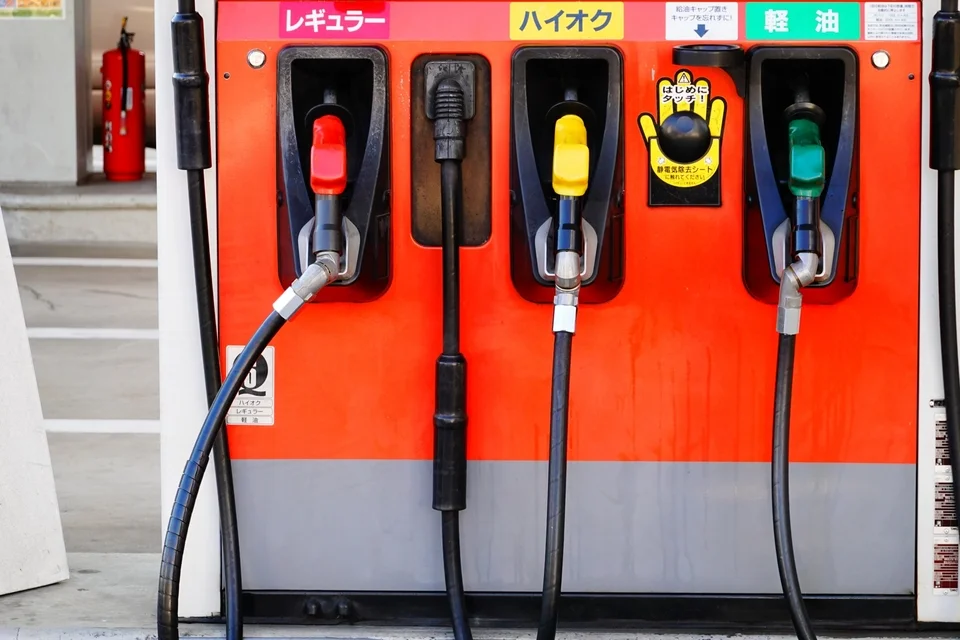
Self-service fueling steps:
1. Choose fuel type, quantity, and payment method:
選擇油品後,可依螢幕指示決定加注油量(可依公升、金額計價),或是直接選擇「満」一次加滿,付費則可以使用信用卡、旁邊的料金機做繳費。
2. Refueling:
Open the fuel cap, insert the nozzle, and start fueling. When finished, return the nozzle, securely close the fuel cap, and collect your receipt and change.
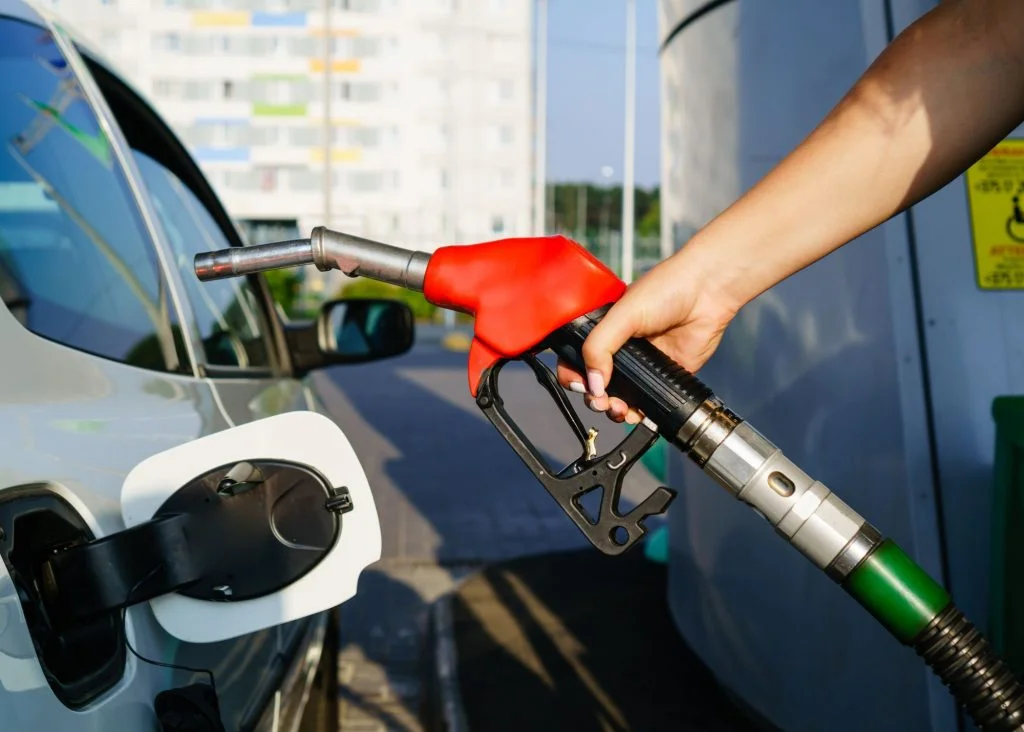
Fuel prices are generally cheaper in suburban areas than in city centers or remote areas. Avoid refueling on highways as it's extremely expensive.
Use gogo.gs to find nearby gas stations and compare prices.
For estimating fuel costs, use theNavitime網站, which also provides information on highway tolls, gas station locations, and parking spots.
Insider Tips for Driving in Okinawa
Navigation in Okinawa: Introduction to Mapcode
Japan has a unique Mapcode navigation system. Here's how to use Mapion to find a destination's mapcode:

Here's how to useMapion to find a destination's mapcode:
💡Step1:
Google search your destination and copy the address

💡Step3:
Confirm the location, click "便利ツール" (Convenient Tools) in the top right, then "地図URL" (Map URL)
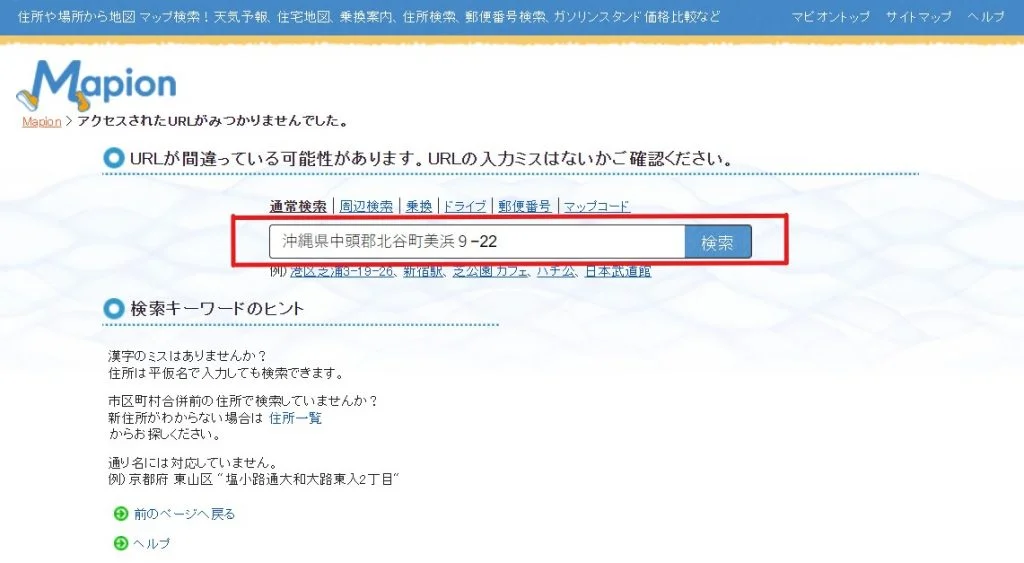
💡Step3:
確認是否為目的地,點擊右上角「便利ツール」,再點擊「地図URL」
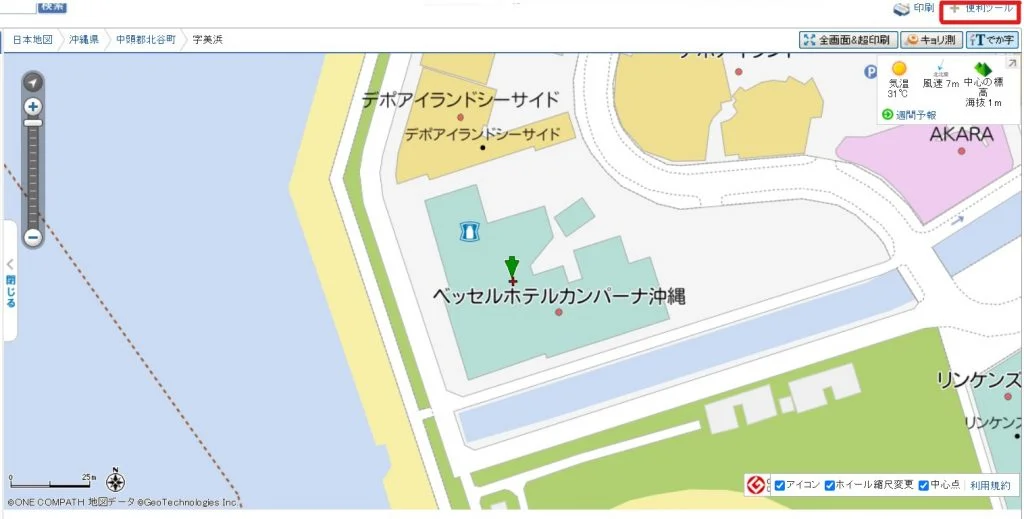
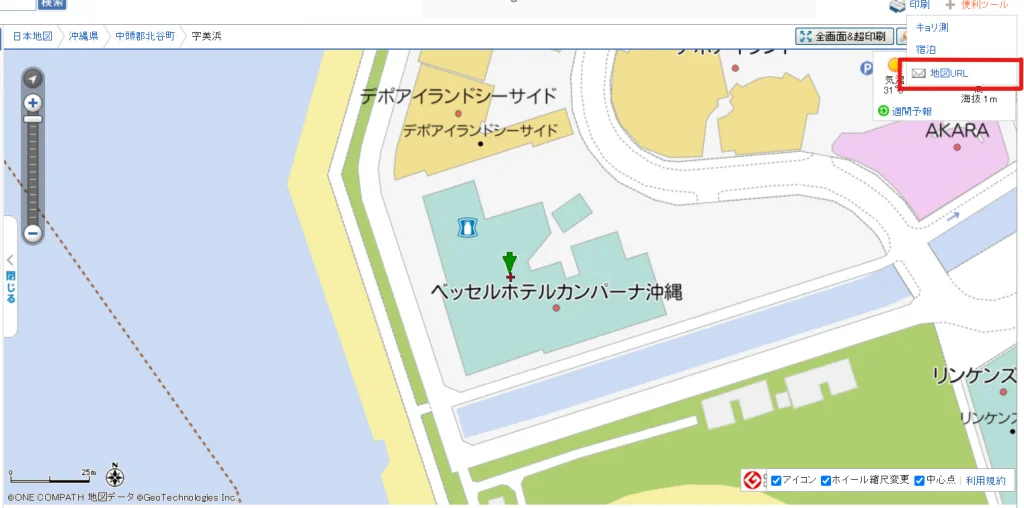
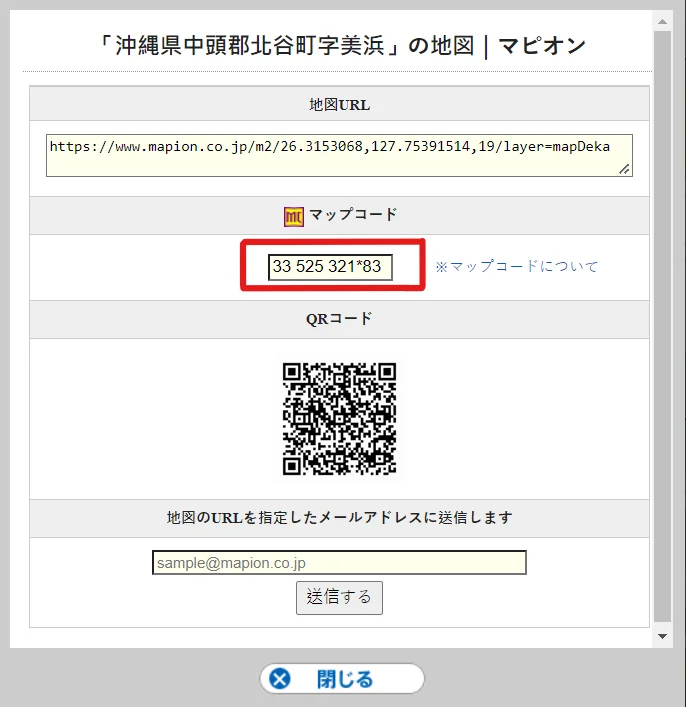
You'll then see the mapcode for your destination.
沖繩高速公路收費- ETC Isn't Always Faster!
There are two ways to pay highway tolls in Okinawa: general cash lanes and ETC lanes.
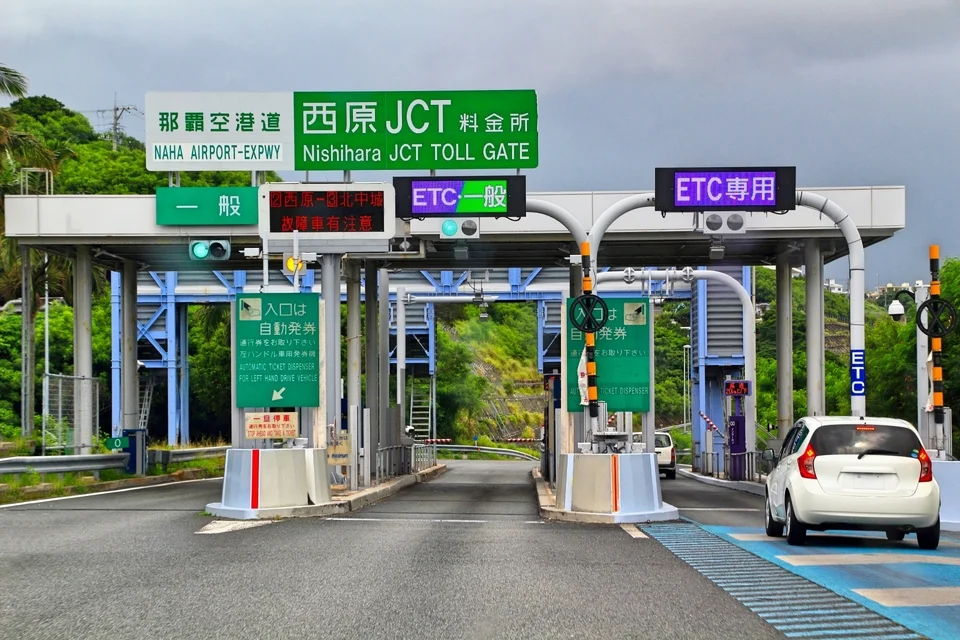
一般現金車道:
會在你上高速高路前領取一張通行卷,下高速公路時將票卡放到計費機台,投入應繳金額就完成囉~
提醒|現金付費會比ETC付費貴上約35%,因此若確定行程上會多次行駛高速公路,建議還是租用ETC卡哦!
ETC lanes:
Ask the rental company if they provide ETC rentals and about the charges.
There are usually two payment methods:Pay for actual usage upon return
Pay a flat fee (usually $20-$34 or ¥3000-¥5000) for unlimited use
另外,ETC有深夜優惠在午夜12點~上午4點期間只要在指定時段,使用ETC服務行駛於沖繩高速公路(無使用次數限制)最多享有7折優惠。住宿在中部,晚上想到南部的唐吉訶德採買的話,深夜優惠是不錯的選擇~
想知道你的沖繩旅程,在高速公路上會花多少過路費嗎?👉 點此前往預估沖繩過路費用
Note: ETC lanes have a 12 mph (20 km/h) speed limit for proper sensor detection. During high traffic, ETC lanes might be slower than cash lanes.
Car Insurance in Okinawa

All vehicles in Japan must have basic insurance by law, including liability insurance. This usually covers personal injury, property damage, and vehicle damage, and is typically included in the rental fee.
While most compensation is paid by the insurance company, renters are still responsible for a portion called the "deductible." There are two types of deductible compensation systems:
1. Collision Damage Waiver (CDW)
(Collision Damage Waiver):An additional insurance option that can waive the renter's deductible in case of vehicle damage or collision.
2.Non-Operation Charge (NOC)
Non-Operation Charge (NOC) Compensation: Covers the rental company's loss of business during vehicle repair time.
Note: These insurances are often charged separately.
| Basic Mandatory Insurance | +CDW | +NOC | |
|---|---|---|---|
| Personal injury compensation (for victims) | ✔️ | ✔️ | ✔️ |
| Property damage compensation | ✔️ | ✔️ | ✔️ |
| Vehicle damage compensation | ✔️ | ✔️ | ✔️ |
| Personal injury compensation (for passengers) | ✔️ | ✔️ | ✔️ |
| Deductible exemption | ✔️ | ✔️ | |
| Business loss fee exemption | ✔️ |
It's strongly recommended to consider purchasing these additional insurance options. A small extra fee can greatly reduce potential huge losses from unexpected accidents.

在沖繩自駕發生車禍怎麼辦?
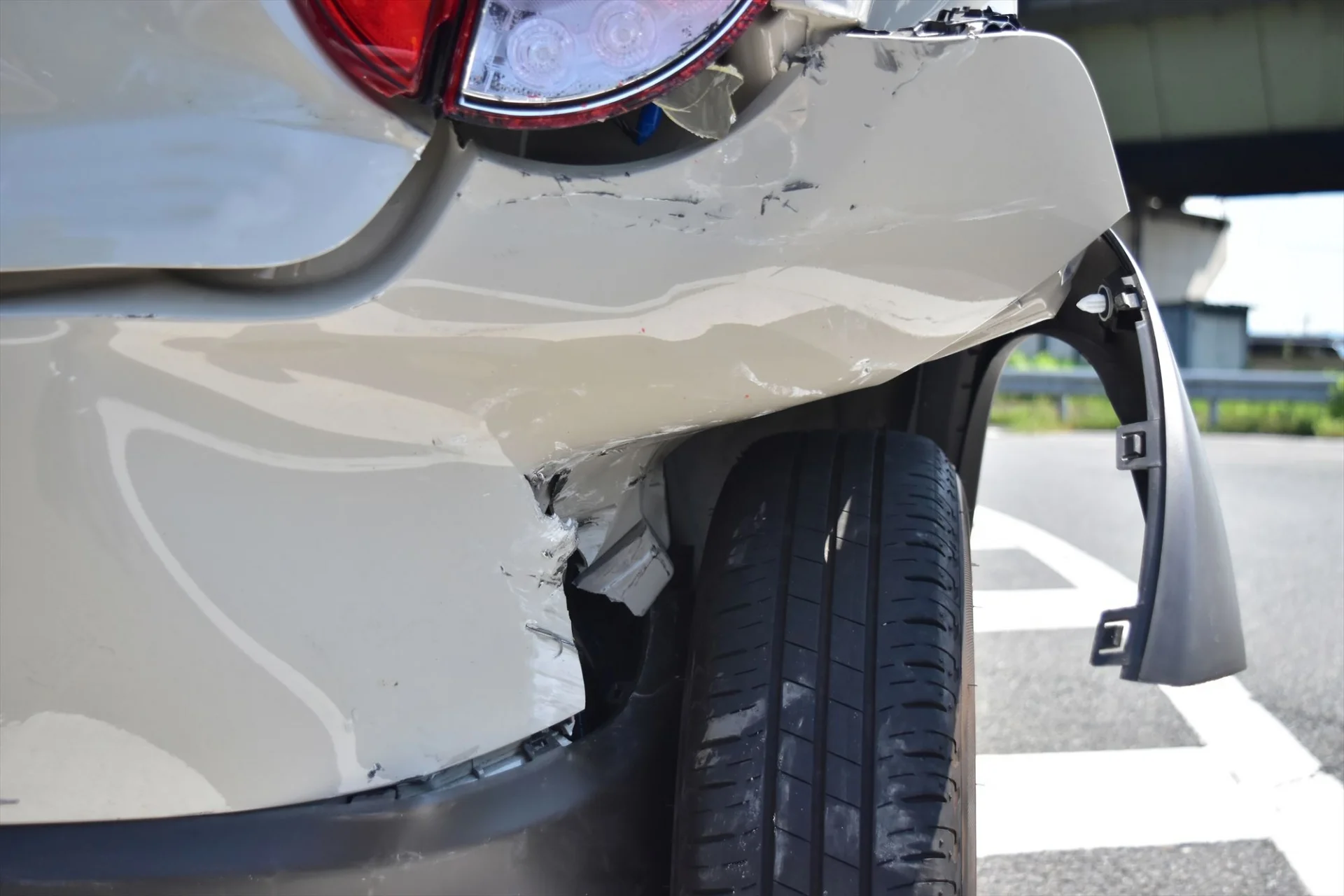
💡Step1:確認是否有人員傷亡,先顧及傷患,後續幾著拍照事故現場照片,四面八方能拍都先拍,如果會影響到車流動線,拍完照後可以先將車子移到路旁(為避免影響後面車輛第二次追撞,這跟台灣非常不同喔)
💡Step2:在路邊放置三角錐等物品,警示後方車輛,並撥打110to report to the police
💡Step3:撥打110報警時須清楚說明事故地點、是否有傷患、並留下姓名與聯絡電話。接著聯絡租車公司,若有中文服務人員可以協助電話說明最好!處理完後一定一定一定要記得索取Be sure to get an accident certificate for insurance claims.
💡Step4:確認當下筆錄等等都沒問題,警察放行後,再跟租車公司確認是否提供拖車等服務,做後續的對應處理。
After understanding these regulations, driving in Okinawa doesn't seem so difficult! Book your self-drive experience now and enjoy the freedom of exploring Okinawa at your own pace!
Watch more article about Okinawa
👉[Okinawa Travel Guide] 2025 Latest Tips, Food Recommendations & 4-Day Itinerary!
👉【Okinawa car rental must see】car rental recommendations, cost comparisons, self-driving attention to a full strategy!
👉【沖繩租跑車】租跑車推薦、價格比較、沖繩跑車自駕行總整理
👉【沖繩必吃美食】精選沖繩燒肉、拉麵、甜點推薦餐廳,不容錯過!
👉 沖繩住宿推薦(2025十大精選好評不踩雷!)
